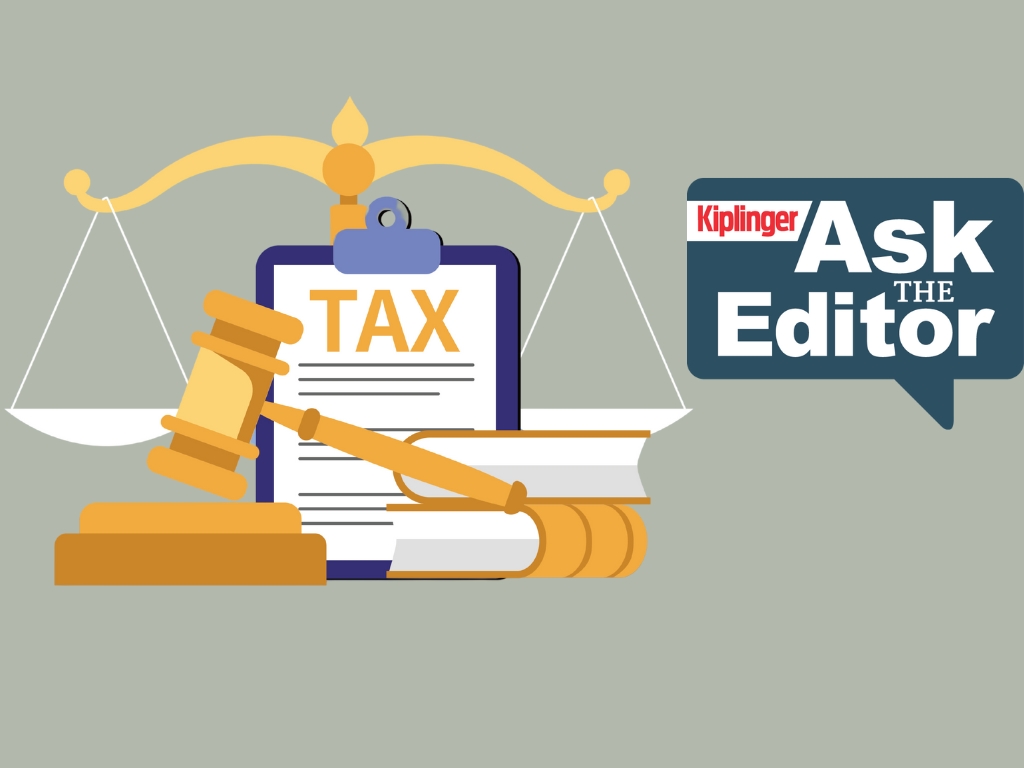10 Insider Trading Stocks: What Execs and Directors Are Buying
When investors think of “insider trading,” they might think of the kind of behavior to which ex-Rep.


When investors think of “insider trading,” they might think of the kind of behavior to which ex-Rep. Chris Collins recently pleaded guilty. In that case, Collins used material, nonpublic information he gained from his seat on a biotechnology company’s board to tip off his son and fiancée’s father, who were able to sell shares before the info became public.
But some insider trading is legal. And in some cases, insider buying can signal to regular investors that something positive might be in the offing.
Insiders – directors, officers and shareholders that own more than 10% of at least one class of the company’s stock – can (and do) buy and sell shares, sometimes frequently. They must abide by certain rules, such as not selling shares within six months of purchase. They also must disclose any transactions to the SEC – and these insider filings are available for public viewing, free of charge, on the SEC’s EDGAR (Electronic Data Gathering, Analysis, and Retrieval) website.
No one understands the challenges and victories of a public company better than the officers and directors who run it. Thus, when knowledgeable insiders buy or sell the company’s shares, savvy investors take note. Sometimes these trades are habitual and mean nothing – but sometimes, they can signal a change in sentiment. A sudden spurt of insider buying may signal new products coming to market or new customers signing up, or simply reflect an insider’s conviction that the stock is undervalued.
Here are 10 stocks that have seen notable insider trading over the past few months. Investors shouldn’t act solely on the basis of this recent insider buying – instead, it’s just one factor to consider when evaluating these or any other stocks. But in each case, the buying stands out for its size or irregularity, which sometimes can be taken as a sign of insider optimism.
Data is as of Oct. 2. Insider buying information gathered from the SEC’s EDGAR database.

Dish Network
- Market value: $16.2 billion
- Notable recent insider purchases: $25.1 million
- Dish Network (DISH, $32.93) is repositioning as a significant new player in the wireless telecom market thanks to the pending merger of T-Mobile US (TMUS) and Sprint (S). The Department of Justice requires T-Mobile and Sprint to sell parts of their business as a condition of the merger – Dish intends on being the acquirer.
Should the merger close – 17 states and the District of Columbia are suing to stop it, with a trial slated for December – Dish will own Sprint’s pre-paid phone business and customers, including Boost Mobile, Virgin Mobile and the Sprint prepaid business. In addition, Dish will own some of Sprint’s nationwide 800 MHz wireless spectrum and have complete access to T-Mobile’s network for seven years. As a result, Dish customers will be able to move “seamlessly” from T-Mobile’s nationwide network to its own new 5G broadband network.
In short, Dish would become the nation’s fourth-largest wireless service provider.
The merger agreement couldn’t come at a better time for Dish, which has been challenged by subscriber losses in its satellite TV business. During this year’s June quarter, the company’s pay-TV customer base declined by 31,000 subscribers. The subscriber loss contributed to a 7% decline in Dish’s June-quarter revenues and a 28% drop in earnings per share (EPS).
Dish is paying up for this deal, too. It will pay $3.6 billion for wireless spectrum from the combined T-Mobile/Sprint, and $1.4 billion for Sprint’s pre-paid phone business. Dish also must, as a condition of the sale, fully deploy the aforementioned nationwide 5G broadband network, covering at least 70% of the U.S., by June 2023. The company expects to invest at least $10 billion in building that network. Long-term debt already sits at $12.7 billion – which is 136% of Dish’s equity – so the buildout will put an additional strain on Dish’s already leveraged balance sheet.
Nonetheless, insider buying is inspiring confidence. Dish chairman Charles Ergen bought 500,005 shares of DISH stock worth roughly $15.7 million in early August. Later in the month, co-founder and Executive Vice President James Defranco added to his stake, spending about $9.4 million on 300,000 shares – his largest inside buy since at least Jan. 1, 2013, which is the start of available data on DISH’s insider trading.

Peabody Energy
- Market value: $1.5 billion
- Notable recent insider purchases: $13.0 million
- Peabody Energy (BTU, $14.51) is the world’s largest private-sector pure-play coal producer. The company operates 23 mines in the U.S. and Australia and produced 12 million tons of metallurgical coal in 2018, making it the largest U.S.-listed metallurgical coal producer. Peabody also produced 19 million tons of thermal coal last year.
Metallurgical coal is used to make steel and is experiencing strong demand from China and India. The company’s Australian mines and recently acquired Shoal Creek mine, located near a major shipping port, are well-positioned to serve the Asian market. Peabody is targeting production of 2.5 million tons of coal from the Shoal Creek mine this year. And the mine’s cash flows imply that it will pay back its purchase price in less than two years.
Peabody’s thermal coal production is purchased by utilities and burned to generate electricity. Peabody recently entered into a joint mining venture with Arch Coal (ARCH) that combines their Powder River Basin and Colorado assets into one mining complex. The joint venture is expected to create $820 million of pretax synergies and make their coal production more price-competitive with natural gas and other fuels.
Peabody has hiked its dividend three times in the past 12 months, for a total increase of 16%. The company also paid out a substantial supplemental dividend of $1.85 per share on March 20, representing a roughly 6.3% annual yield at the time. (BTU’s regular dividend yields about 4% at current prices.) However, that hasn’t quite made things right for investors; BTU shares have lost 52% of their value so far this year as lower demand and prices have crushed coal producers.
That said, Elliott Management, one of the largest activist investors in the world, bought roughly 710,000 shares of BTU, worth about $13 million, via several of its subsidiaries across several trades in August. Elliott, which hasn’t sounded off about the recent purchases, now owns about 19.9 million shares of the stock – a roughly 18.6% stake.

Ford
- Market value: $34.4 billion
- Notable recent insider purchases: $8.0 million
- Ford (F, $8.61) is the second-largest North American automaker (13.8% share) and the world’s sixth-largest automaker overall (6.2% share). The company produces Ford cars, trucks and SUVs, as well as luxury vehicles under its Lincoln brand. But its product of note is the F-150, which has been America’s best-selling truck for 42 years in a row.
While Ford has struggled ever since the U.S. started its trade war with China in early 2018, it has recovered somewhat in 2019, up 13% year-to-date. But its results haven’t given investors much to hope for. June-quarter revenues were flat year-over-year ($38.9 billion). EPS declined 85%, though mostly because of massive restructuring charges related to operations in Europe and South America. But even backing out those charges, adjusted earnings of 28 cents per share missed analyst expectations for 31 cents. Its 2019 earnings forecast disappointed, too.
Ford does have a few other things going on, however. It launched new models of its Ford Explorer and Lincoln Aviator during the June quarter and introduced the Ford Puma, a new crossover vehicle for the European market. The company also announced a partnership with Volkswagen (VWAGY) for a new autonomous-driving platform named Argo AI.
Deutsche Bank analyst Emmanual Rose thinks F shares have “considerable unappreciated potential” due to future cost benefits from the global restructuring, but “but investors may now wait for more visible earnings and cash flow traction, before giving the stock credit for it.”
Ford Executive Chairman William Clay Ford didn’t wait to make his insider trading move. He acquired 840,962 shares worth almost $8 million in early August, increasing his ownership stake to 1.1 million shares. That was his largest purchase, on a dollar basis, since buying up 800,000 shares for $10.9 million in March 2016.

MPLX LP
- Market value: $29.5 billion
- Notable recent insider purchases: $3.2 million
- MPLX LP (MPLX, $27.91) is a master limited partnership (MLP) that owns and operates energy infrastructure assets such as gas and oil pipelines, gathering systems, terminals and storage facilities. The company was formed by Marathon Petroleum (MPC) in 2012 to own, operate, develop and acquire these various types of assets.
MPLX owns more than 8,000 miles of pipeline extending across 17 states, mainly in the Midwest and Gulf Coast. MPLX’s terminal facilities have 23.7 million barrels of storage capacity and its tank farms located near major refineries can hold 56 million barrels of oil.
The company closed on its $9 billion acquisition of Andeavor Logistics at the end of July. It plans to optimize its portfolio by selling non-strategic asset and using the proceeds to reduce debt and invest in higher-return projects. MPLX also has green-lit big investments in its Whistler natural gas pipeline and Wink-to-Webster crude oil pipeline – both located in the Permian Basin, located in the American Southwest.
MPLX has raised its distribution every quarter since it went public in October 2012, including a 6.4% bump last quarter to 65.75 cents per share. That’s good for a yield of 9.6% at current prices. The company keeps backing it up with strong fundamental performance; in its June quarter, distributable cash flow (DCF, an important metric of MLP profitability) improved 6.7% to $741 million.
Heavy insider trading ensued in the weeks following the closed acquisition. MPLX Chairman and CEO Gary Heminger may have signaled his approval when he purchased 42,600 shares worth roughly $1.2 million in early August. Director Dan Sandman purchased 36,630 shares worth almost $1 million early on in the month, too, and Director Gary Peiffer bought 36,800 shares worth roughly $1 million across two buys in August.
* Distributions are similar to dividends but are treated as tax-deferred returns of capital and require different paperwork come tax time.

Align Technologies
- Market value: $14.4 billion
- Notable recent insider purchases: $1.0 million
- Align Technologies (ALGN, $179.75) owns the Invisalign system of invisible braces, used by more than 7.2 million patients (so far) to improve their smiles. Less known to consumers is the iTero intraoral scanner, which Align developed to help dentists create dental crowns, bridges and custom implants. Dentists have made more than 17.4 million dental scans using iTero.
ALGN shares were enjoying strong gains in 2019 up until late July, when it reported its results from the June quarter. While Invisalign shipments improved by 24.6% and EPS climbed 41%, those shipments came in below analyst estimates, and worse, it reduced its guidance for the September quarter. Align cited weaker demand in China and increased competition in doctor-directed and direct-to-customer sales channels as reasons for the lower guidance.
That sparked a 25% selloff in shares that has ALGN down 14% for the year-to-date. It also sent the analyst crowd into action. Stephens analyst Chris Cooley cut his price target to $200 per share, citing worries that a structural shift in the braces market was underway – one that favors direct-to-customer suppliers. Evercore analyst Elizabeth Anderson downgraded the stock to Market Perform (equivalent of Hold). Baird analyst Jeff Johnson pulled ALGN from his firm’s top picks list.
The stock did enjoy a little insider buying in the wake of the selloff. Align CEO and President Joe Hogan showed his support by acquiring almost 5,000 shares worth about $1.0 million in early August. There was some insider selling, too. Director Joseph Lacob disposed of 40,000 ALGN shares worth roughly $7.2 million across August. However, insiders often partake in regular selling. Indeed, Lacob has sold shares several times each year since 2017 and hasn’t recorded any purchases since at least 2013.

Ryman Hospitality Properties
- Market value: $4.1 billion
- Notable recent insider purchases: $1.1 million
- Ryman Hospitality Properties (RHP, $80.25) is a real estate investment trust (REIT) that owns four upscale Gaylord-branded conference-center resorts, as well as interests in another Gaylord-branded resort and convention center. It also boasts entertainment assets including the Grand Ole Opry and its former home, the Ryman Auditorium.
JPMorgan Chase REIT analyst Joseph Greff turned cautious on the lodging sector in July because of high valuations and what he sees as the late stage of the current lodging cycle. He downgraded ratings on several lodging REITs, including RHP, to Underweight (equivalent of Sell) and lowered all of his price targets.
That’s not a promising backdrop, but the REIT is at least posting solid results. For the June quarter, its funds from operations (FFO, an important REIT profitability metric) grew 9.6%, and the company upgraded its full-year guidance for revenues and FFO. That FFO funds a substantial 4.5% yield on a dividend that has been growing regularly for years.
Ryman Hospitality Chairman and CEO Colin Reed argues that Ryman’s advance bookings and contract structures make it less volatile than other lodging REITs. He put his money where his mouth is in early August with some insider trading. Namely, he bought roughly 13,600 shares of RHP stock worth $1.1 million in early August – the largest purchase by a Ryman insider in a year.

AbbVie
- Market value: $106.6 billion
- Notable recent insider purchases: $10.4 million
- AbbVie (ABBV, $72.13) is a leading pharmaceutical company. It’s best-known for blockbuster drug Humira, an arthritis treatment and the world’s top-selling prescription drug. Humira accounted for $19.1 billion in 2018 –nearly 60% of AbbVie’s sales that year – but faces increasing competition from lower-priced biosimilars already available in Europe and coming to U.S. markets in 2023.
The company is addressing this this challenge by expanding its product pipeline, as well as through mergers and acquisitions (M&A). In June, AbbVie announced its largest deal ever, agreeing to pay a 45% premium to acquire Allergan (AGN) for $63 billion, or $188 per share.
The Allergan acquisition makes AbbVie the market leader in the $8 billion Botox market and gives the company an ophthalmic drug product line that includes popular names such as Restasis. Allergan also should provide AbbVie with additional cash flow to fund research and asset purchases. The deal, scheduled to close in early 2020, is also expected to create $2 billion in annual pre-tax synergies and cost reductions for AbbVie over the next three years.
Interestingly, some analysts took a negative view of the acquisition, and ABBV hit a 52-week low, though it has since recovered, descended to even lower lows, and recovered yet again. Piper Jaffray analyst Christopher Raymond was blunt, quipping that “two turkeys don’t make an eagle.” Leerink Partners analyst Geoff Porges criticized AbbVie’s pipeline soon after the deal announcement, but he actually upgraded the stock to Outperform (equivalent of Buy) on July 2, saying “While we are not necessarily fans of consolidation for its own sake, we see AbbVie bringing discipline and decisiveness to Allergan’s portfolio.”
Since the deal’s announcement, ABBV has been flooded with inside buying. Chief Strategy Officer Henry Gosebruch bought 30,000 shares worth $2 million, Director Roxanne Austin purchased 76,500 shares worth $5.1 million; Jeffrey Stewart, SVP of U.S. Commercial Operations, bought 15,552 shares worth $1 million, Nicholas Donoghoe, SVP of Enterprise Innovcation, snapped up 7,525 shares worth almost $500,000, and Vice Chairman Laura Schumacher acquired 25,000 shares at $1.8 million.

Athenex
- Market value: $957.7 million
- Notable recent insider purchases: $13.2 million
- Athenex (ATNX, $12.39) is a biopharmaceutical company developing new treatments for cancer. The company focuses on developing oral versions of existing cancer drugs that must currently be administered intravenously. Athenex has several drugs in its pipeline, including two in late-stage clinical studies.
Recently released results from the company’s Phase III trial of oral paclitaxel showed the new drug produced a better overall response rate in breast cancer patients than intravenous paclitaxel. It also was associated with fewer treatment-related adverse events.
However, not all the study data was positive. Patients treated with oral Paclitaxel experienced a higher incidence of infection, neutropenia and gastrointestinal side effects than patients treated with the IV drug. These concerns triggered a 30% decline in ATNX’s share price after the study results were published.
Athenex still plans to file a New Drug Application (NDA) with the U.S. FDA over the next few months. The company recently raised $100 million through a private equity placement that will fund infrastructure investments in manufacturing and marketing the new drug.
The company also announced second-quarter results in mid-August, which included a 92% jump in revenues and a narrower net loss of 44 cents per share (from 58 cents a year earlier). Athenex received a $20 million milestone payment from a development partner that will be recognized as revenues in the second half of 2019.
Billionaire hedge fund manager and biotech specialist Joe Edelman is a “beneficial owner” of ATNX, which means he owns at least 10% of at least one class of stock. Edelman has signaled his confidence over the past couple months with several spurts of heavy insider buying. His Perceptive Advisors hedge fund acquired more than 810,000 shares of ANTX stock worth $11.8 million of ATNX stock in early August, then another 100,000 worth $1.4 million in September, to bring his stake to 10.7 million shares, or 13.9%.
The important thing to remember with smaller biotechnology companies is that even keeping the lights on isn’t a given until marketed products scale up. With $165.9 million of cash and investments on hand, Athenex believes it has sufficient funds to finance its operations through the first nine months of 2020. But that only takes investors up until roughly a year from now – more needs to happen for ATNX, which went public in July 2017, to be financially viable long-term.

VTV Therapeutics
- Market value: $83.7 million
- Notable recent insider purchases: $7.3 million
- VTV Therapeutics (VTVT, $1.43) is a tiny biotechnology company that develops orally administered treatments for diabetes, chronic pulmonary obstruction disorder, Alzheimer’s disease and other chronic illnesses. The company has seven drug candidates in its pipeline in early-stage Phase I or Phase II clinical trials – in other words, it has no marketed products.
VTV’s lead drug candidate, azeliragon, has shown promise as a treatment for early-stage Alzheimer’s disease patients who also suffer from type 2 diabetes. The company anticipates publishing results from Phase II trials of azeliragon in late 2020. Another pipeline candidate, Simplici-T, has potential as a treatment for Type 1 diabetes. Simplici-T generated positive results in the first leg of its Phase II clinical trials; VTV plans to report second leg results in early 2020.
Billionaire biotech investor Ron Perelman is a beneficial owner of VTVT shares, via his MacAndrews & Forbes investment group. M&F has been steadily accumulating stock – not by making direct purchases, but by making use of an agreement empowering M&F to exercise options to purchase shares. In August, he accumulated 1.4 million shares worth roughly $2.3 million, then in September, he acquired another 3.2 million shares worth about $5 million. He now owns a roughly 80% stake across the company’s publicly traded A shares and private B shares.
But this might be a stock best avoided. Shares have lost roughly 90% of their value since the company’s August 2015 IPO, thanks in part to a failed Phase III trial for azeliragon in April 2018, which forced the company to end clinical trials for the drug at the time.
Meanwhile, VTV generated June-quarter revenues of $1.8 million, mainly from milestone payments, but spent $6.6 million on operations, resulting in a $2.9 million net loss. Cash dwindled from $5.0 million last quarter to less than $1.5 million. Thus, VTV will need to raise additional capital to fund ongoing clinical trials.

USA Technologies
- Market value: $413.4 million
- Notable recent insider purchases: $15.8 million
- USA Technologies (USATP, $24.35) is another stock with heavy insider trading that might be too risky for most buy-and-hold investors.
USA Technologies provides cashless payment processing and related services for small ticket, POS (Point-of-Sales) transactions. The company mainly serves clients in the beverage and food vending industries, though it plans to expand into additional segments, including commercial laundry, amusement arcades and kiosks. At present, USA Technologies has nearly 1 million POS connections to its services and customers across the U.S. Canada, Mexico and Australia.
USA Technologies believes it has penetrated just 7% of its addressable payment processing market, which the company estimates at 13 million to 15 million POS connections. Partnerships with Visa (V), Mastercard (MA), JPMorgan Chase (JPM) and Verizon (VZ), among others, present huge growth opportunities across its existing customer base.
Between 2011 and late 2018, USA Technologies grew sales 29% annually and transaction volume expanded at a 38% yearly rate. High recurring revenues (approximately 75% of revenues are recurring licensing and processing fees) contributed to double-digit sales growth.
Where things get messy is the company’s inability to meet SEC filing deadlines. USA Technologies has not yet filed its 2018 annual report or 2019 quarterly reports. The company has faced multiple delisting warnings (and received several extensions) until it received notice Sept. 24 that it would be delisted from the Nasdaq on Sept. 26. It was. USA Technologies now trades “over-the-counter,” which means it’s no longer required to post regular financial updates – an important protection measure that keeps current and would-be investors informed.
Interestingly enough, beneficial owner Doug Braunstein, through his Hudson Executive Capital LP investment firm, continued to buy through the catastrophe. Hudson took a 12% stake in USA Technologies in May, at roughly $5.45 per share, calling the stock “undervalued and an attractive investment.” He acquired more than 1 million shares worth $6.9 million in August. The company was granted an extension Sept. 9 with a deadline of Sept. 23. Braunstein still accumulated another 1.9 million shares worth $8.9 million between Sept. 23-26.
USA Technologies said it will try to regain compliance and its Nasdaq listing “as soon as practicable.” But whether it will is unknown, making it exceedingly risky to follow in the footsteps of Braunstein’s insider buying.
Profit and prosper with the best of Kiplinger's advice on investing, taxes, retirement, personal finance and much more. Delivered daily. Enter your email in the box and click Sign Me Up.

Lisa currently serves as an equity research analyst for Singular Research covering small-cap healthcare, medical device and broadcast media stocks.
-
 Ask the Editor — Tax Questions on the New Senior Deduction
Ask the Editor — Tax Questions on the New Senior DeductionAsk the Editor In this week's Ask the Editor Q&A, we answer tax questions from readers on the new $6,000 deduction for taxpayers 65 and older.
-
 These Summer 2025 Back-to-School Tax-Free Weekends Are Starting Now
These Summer 2025 Back-to-School Tax-Free Weekends Are Starting NowSales Tax Over a dozen states offer back-to-school shoppers a sales tax holiday this summer.
-
 The 24 Cheapest Places To Retire in the US
The 24 Cheapest Places To Retire in the USWhen you're trying to balance a fixed income with an enjoyable retirement, cost of living is a crucial factor to consider.
-
 SEC Cracks Down on Misleading Fund Names: The Kiplinger Letter
SEC Cracks Down on Misleading Fund Names: The Kiplinger LetterThe Kiplinger Letter The SEC rules aim to crack down on so-called “greenwashing” — misleading or deceptive claims by funds that use ESG factors.
-
 For a Concentrated Stock Position, Ask Your Adviser This
For a Concentrated Stock Position, Ask Your Adviser ThisThere can be advantages to having a lot of stock in one company, but ‘de-risking’ can help avoid some significant disadvantages.
-
 5 Stocks to Sell or Avoid Now
5 Stocks to Sell or Avoid Nowstocks to sell In a difficult market like this, weak positions can get even weaker. Wall Street analysts believe these five stocks should be near the front of your sell list.
-
 Three Financial Tips for Women’s History Month
Three Financial Tips for Women’s History MonthWomen still face unique economic and social challenges today, so here are some key things to consider that can lead to a more secure financial future.
-
 Worried About Checking Your Portfolio? Don't Be: Things Are Looking Up
Worried About Checking Your Portfolio? Don't Be: Things Are Looking UpThough the markets are still fluctuating, this expert sees an encouraging upward trend and is giving himself permission to check his investments.
-
 Laid Off With a Severance Package? Here’s How to Make a Plan
Laid Off With a Severance Package? Here’s How to Make a PlanGathering all the relevant information and staying organized is key, as is getting your financial team involved. Here are five financial planning tips to help.
-
 The Markets Were Miserable Last Year, But That’s Great News
The Markets Were Miserable Last Year, But That’s Great NewsIt’s all about perspective. Hopefully, you learned that your financial plan can withstand market downturns. If not, now you know you need to make adjustments.
